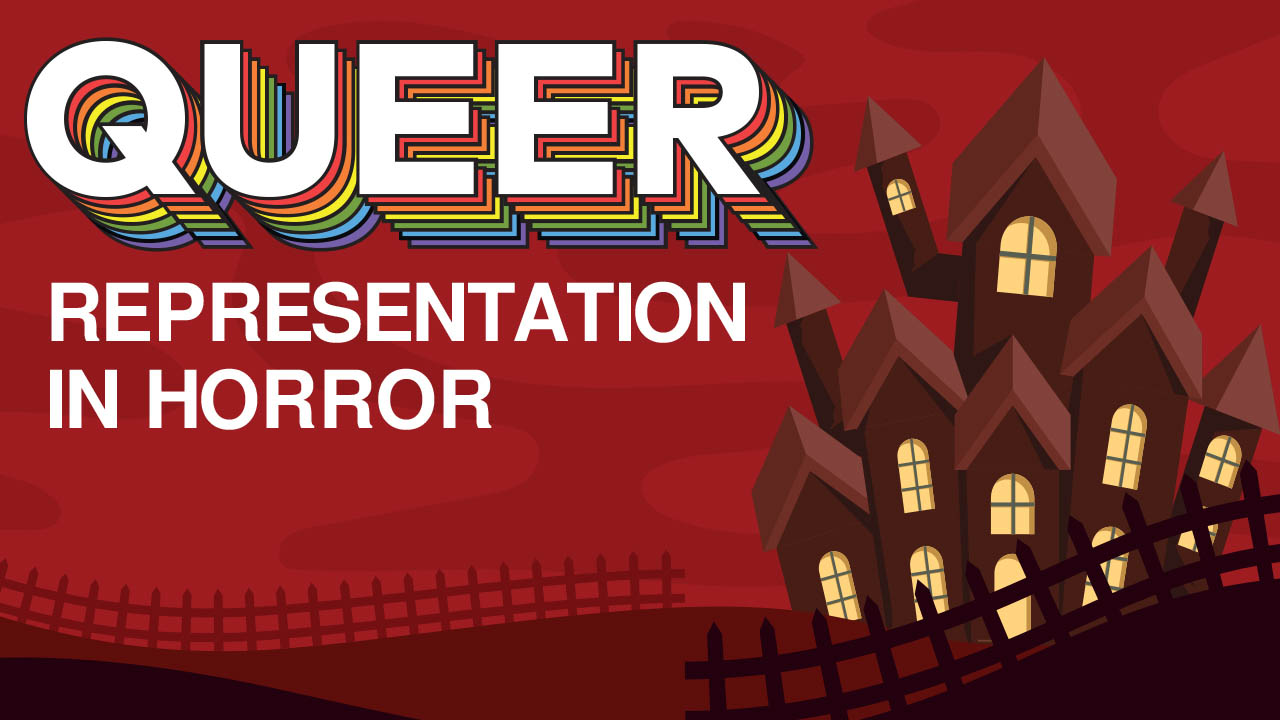Queer representation in horror
 CREDIT: FSU PUBLICATIONS AND COMMUNICATIONS DEPARTMENT
CREDIT: FSU PUBLICATIONS AND COMMUNICATIONS DEPARTMENTExamining contemporary horror films through the same lens shows how horror and queerness intersect more often than some would think. Some do it well, some do it poorly, and some have the heart, but fumble the execution.
THE GOOD
One of the most famous queer horrors is A Nightmare on Elm Street 2: Freddy’s Revenge. Main character Jessie is played by Mark Patton, who was a closeted gay man at the time. Jessie is very rarely fully clothed in the film and plays the role of the typically female “Final Girl.” Writer David Chaskin says he intentionally wrote homoerotic subtext into the film, saying that he tapped into the angst around being queer in the 80s to give the horror “extra edge.”
Multiple moments during the movie demonstrate this homoeroticism, from Jessie being hit on at a leather bar by his gym teacher, fleeing to his best friend after being rejected by his girlfriend, or a cut moment where villain Freddie Krueger was going to sensually stick one of the blades of his iconic weapon into Jessie’s mouth.
Unfortunately, this film also ended Patton’s career. Chaskin denied the gay subtext, instead shifting the blame to how Patton played the part. He left Hollywood soon after.
The Chucky franchise is also very queer. The man behind the entire franchise, Don Mancini, is an openly gay man. Mancini has written everything in the franchise, barring the reboot, and even directed three of the films. Bride of Chucky has a gay best friend character who isn’t stereotypical or played for laughs as is the norm in horror at the time. Seed of Chucky, besides having an awful title, has a genderfluid main character whose main conflict is accepting that identity.
Cult of Chucky ends with main character Nica being possessed by Chucky, and making off with Chucky’s lover Tiffany, played by long-time gay ally and icon Jennifer Tilly. The Chucky series on Syfy has a gay main character and has a nice romance between two gay teens. Chucky is queer as queer can be.
THE BAD
Despite all this, queerness is not always handled well in horror. Silence of the Lambs, while a fantastic film, paints transgender women in an incredibly negative light. The villain of the film, Buffalo Bill, kills and skins women in order to make a “suit” for himself. The film reveals later that he applied for gender-affirming surgery but was denied, citing insanity. The film’s director, Jonathan Demme, has stated that Bill isn’t gay or transgender. Hannibal Lecter expressly states that Bill isn’t transgender as well.
Despite this, Buffalo Bill, a self-admitted trans woman, brutally killing and skinning women to make a disturbed facsimile of a woman paints transgender women in a less than stellar light.
In the same vein, Alfred Hitchcock’s classic Psycho, has a killer who dresses as his mother. Norman Bates has an alternate personality, a jealous and possessive perversion of his mother, that kills any women Bates finds himself attracted to. When wearing her clothes, he believes himself to be his mother. It’s not as egregious as Silence of the Lambs, but the titular “psycho” subverts gender for little more than shock value. The movie doesn’t have anything to say about it other than “Norman Bates cross-dresses. Isn’t that weird?”
THE CONFUSED
Sleepaway Camp is a bad knockoff of Friday the 13th, with one interesting twist. The killer is one of the campers. Fourteen year-old Angela ends up being the one behind the killings at Camp Arawak. The second big twist is that Angela is actually her brother Peter. The real Angela died in a boating accident when the two were young and Peter was taken in by his aunt, who always wanted a daughter.
On the one hand, the portrayal of a young trans woman is actually not bad for the time. She’s a quiet girl who sticks to herself, and when she’s called out for being a “queer,” she stays silent, in a way many closeted young teens do. On the other, her gender is played specifically for shock value. She’s revealed to be a trans woman, with one onlooker exclaiming “She’s a boy!” and with that revelation, the movie ends. There’s no exploration of what that means to Angela or the other campers. It’s a shocking ending. But that’s all it is.
Horror is an inherently queer genre. For the longest time, we were the unknown monster in the closet. We relate to the ostracized villains of horror because we were ostracized. When horror embraces its queerness, we should celebrate it, even if the execution is fumbled.

















